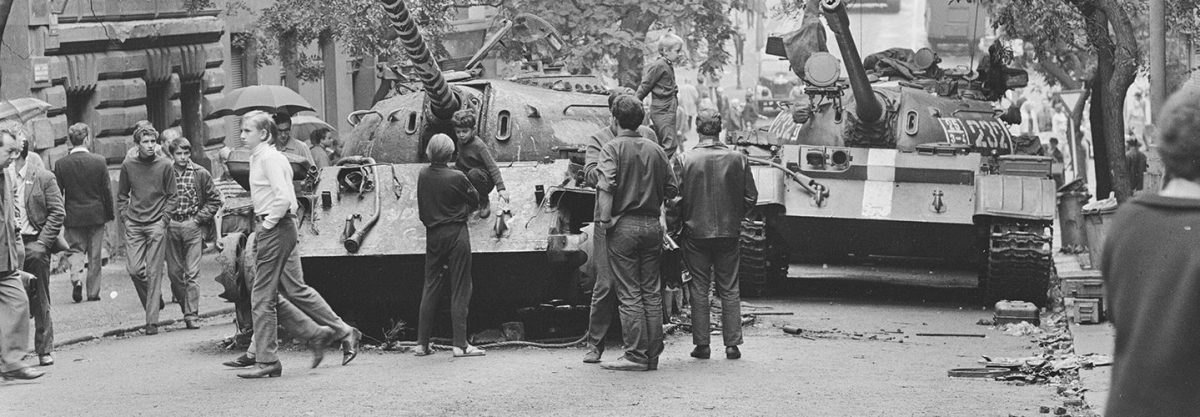Fifty years later, 1968 is still arguably the most historic year in modern American history. It was a year of triumphs and tragedies, including two major assassinations, a moon orbit, and many protests worldwide. Below, we take a look at some of the biggest events from that year.
January 5: The Prague Spring
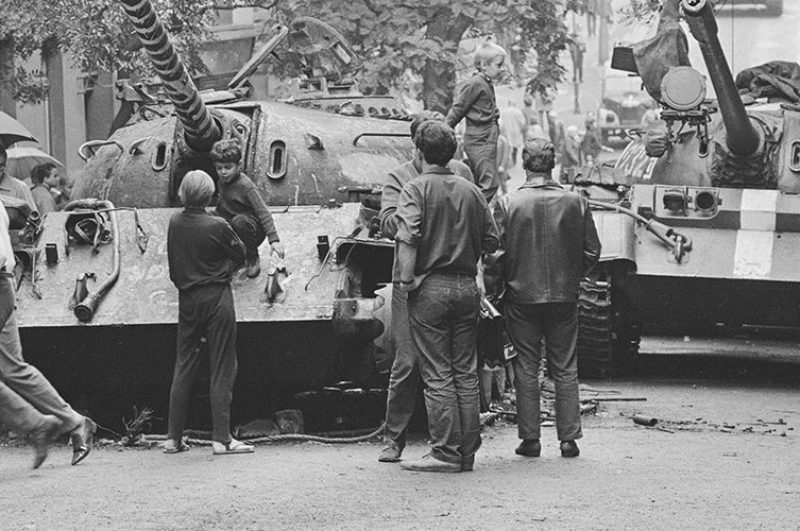
Prague, Czechoslovakia. The Prague Spring, a period of political liberalization in Czechoslovakia during the era of its domination by the Soviet Union after World War II. August 1968. (Daily Mirror/Mirrorpix/Mirrorpix via Getty Images)
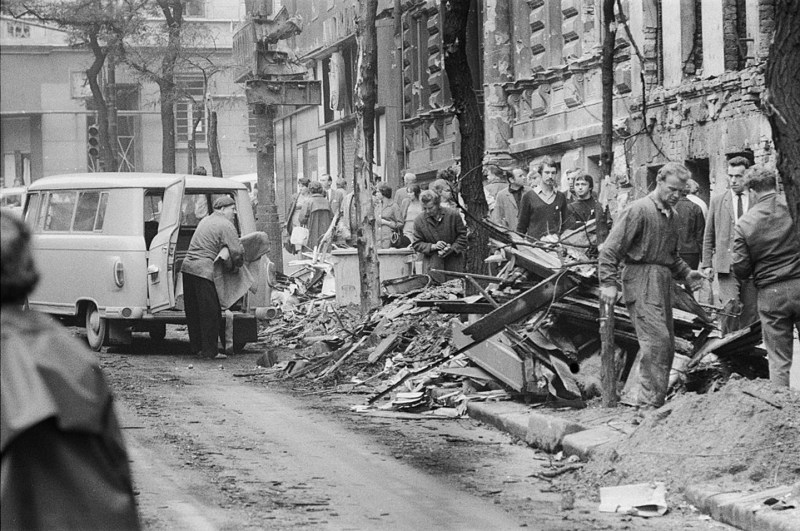
End of the Prague Spring, a period of political liberalization in Czechoslovakia during the era of its domination by the Soviet Union after World War II. August 1968. (Daily Mirror/Mirrorpix/Mirrorpix via Getty Images)
Mirrorpix via Getty Images
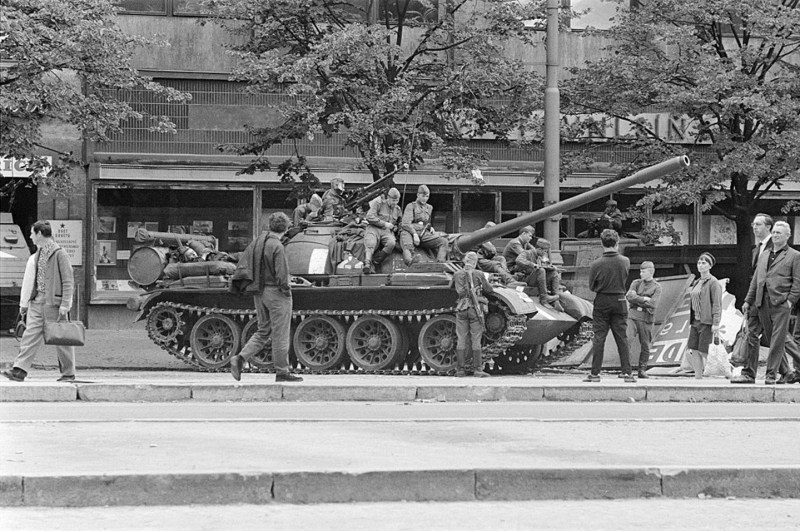
The Prague Spring, a period of political liberalization in Czechoslovakia during the era of its domination by the Soviet Union after World War II. August 1968. (Daily Mirror/Mirrorpix/Mirrorpix via Getty Images)
Mirrorpix via Getty Images
January 23: North Korea captures the USS Pueblo
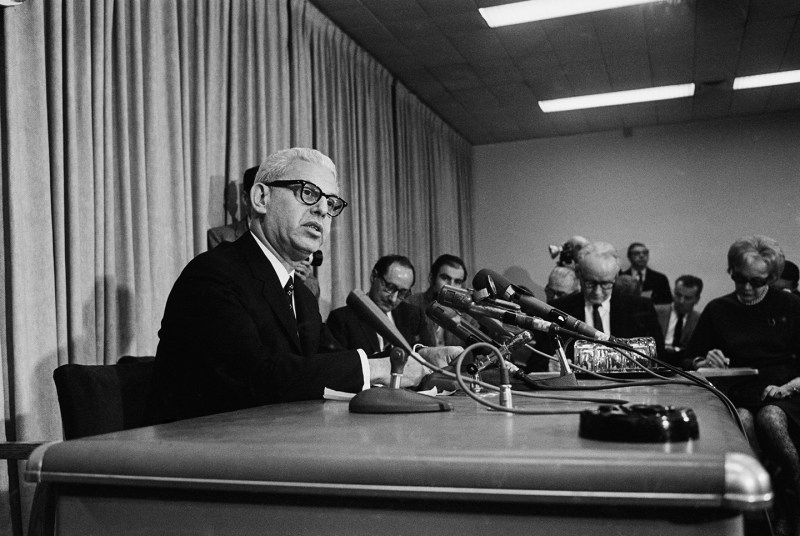
U.S. Ambassador to the United Nations Arthur Goldberg (far left) reads a statement to the press on a letter that was given to the United Nations Council President requesting a meeting January 26 of the United Nations Security Council to discuss the capture of the U.S.S. Pueblo by North Korea.
Bettmann Archive
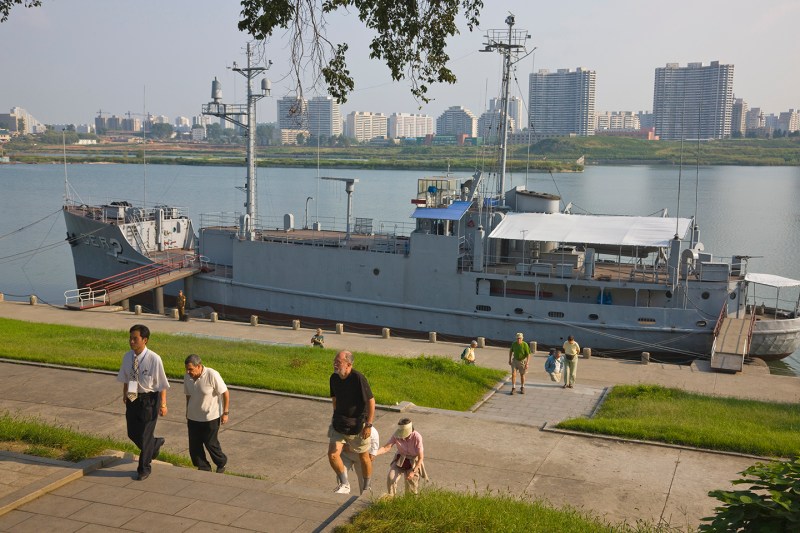
Western tourist at USS Pueblo, a technical research ship (Navy intelligence) captured by DPRK on January 23, 1968. (Getty Images)
Getty Images/Lonely Planet Image
January 30: North Vietnam launches the Tet Offensive against the United States and South Vietnam

HUE, VIET NAM: File picture shows Vietcong soldiers climbing onto a US tank abandoned on a road in Hue in 1968 during the Tet general offensive. This week sees the 30th anniversary of the offensive, a surprise attack on nearly 100 targets in South Vietnam that marked a turning point in the Vietnam war. (AFP/Getty Images)
AFP/Getty Images
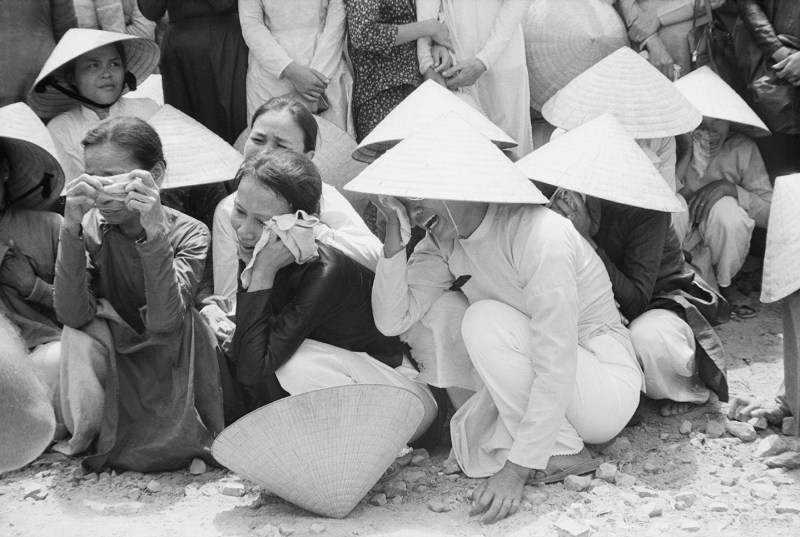
Hue, South Vietnam: Women grieve for the more than 400 victims of the 1968 Viet Cong Tet offensive whose bodies were found in mass graves outside Hue. The bodies were reburied after a funeral service.
Bettmann Archive
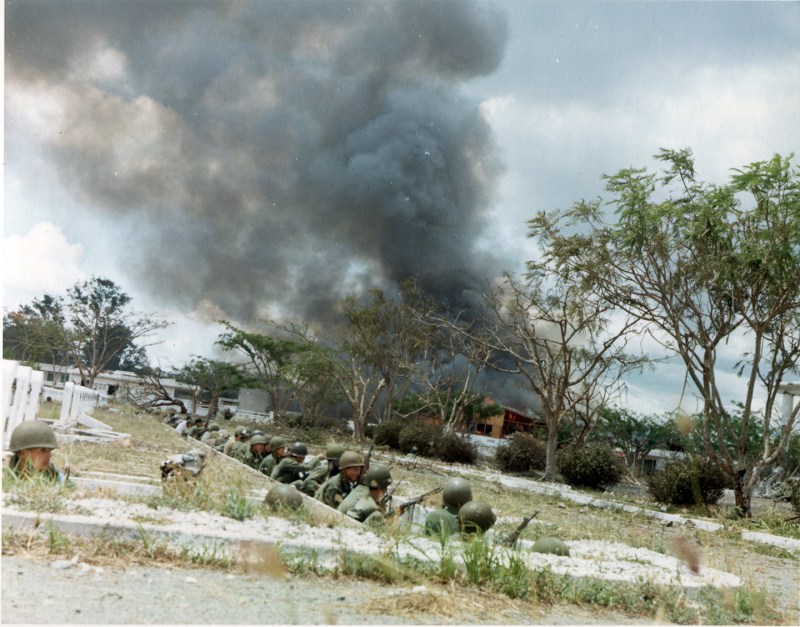
View of Army of the Republic of Viet Nam (ARVN) soldiers as they take cover in the old French cemetery during operations in the Tet Offensive, Saigon, Vietnam, February 1, 1968. (PhotoQuest/Getty Images)
Getty Images
April 4: Martin Luther King Jr. assassinated in Memphis, Tennessee
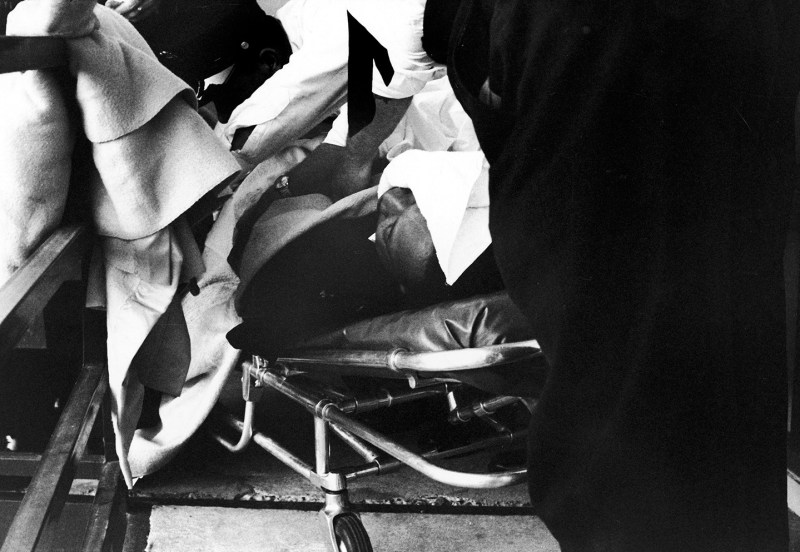
An unidentified man uses a blanket to cover the body of slain American civil rights leader Dr. Martin Luther King, Jr. (1929 – 1968) in preparation for removal from the balcony of the Lorraine Motel after King’s assassination, Memphis, Tennessee, April 4, 1968. (Joseph Louw/The LIFE Images Collection/Getty Images)
The LIFE Images Collection/Getty
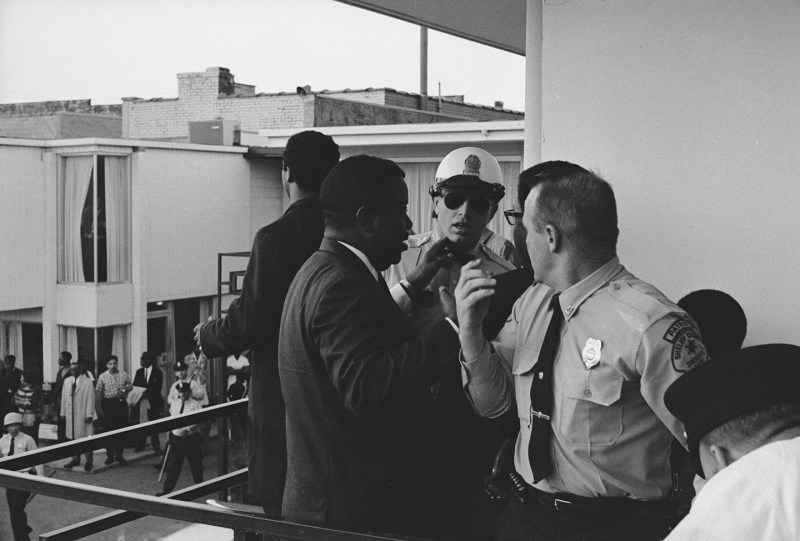
Police officers stand at the scene after the assassination of Civil Rights leader Dr. Martin Luther King Jr at the Lorraine Motel, Memphis, Tennessee, April 4, 1968. (Joseph Louw/The LIFE Images Collection/Getty Images)
The LIFE Images Collection/Getty

The casket of assassinated civil rights leader Dr. Martin Luther King Jr. being carried through streets on a mule-drawn wagon. (Lynn Pelham/The LIFE Picture Collection/Getty Images)
The LIFE Picture Collection/Gett
June 5: Robert F. Kennedy assassinated in Los Angeles
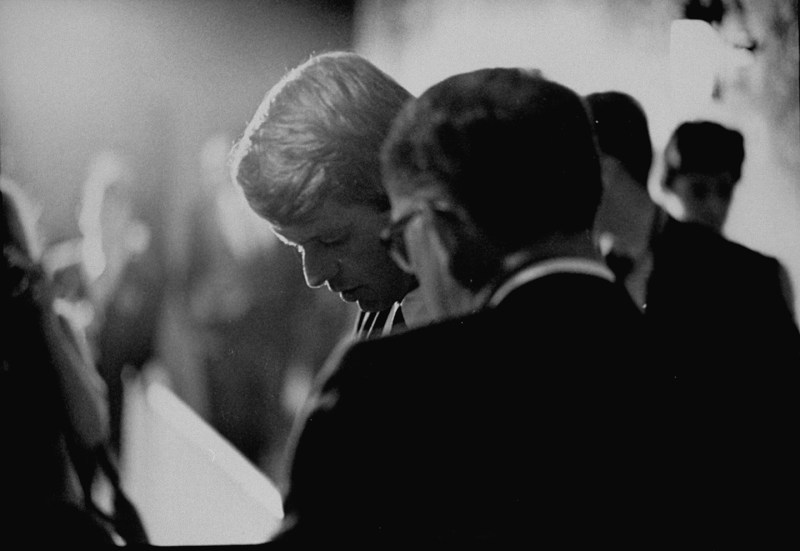
Robert F. Kennedy was talking to an aide at the Ambassador Hotel, shortly before his assassination. (Bill Eppridge/The LIFE Picture Collection/Getty Images)
The LIFE Picture Collection/Gett
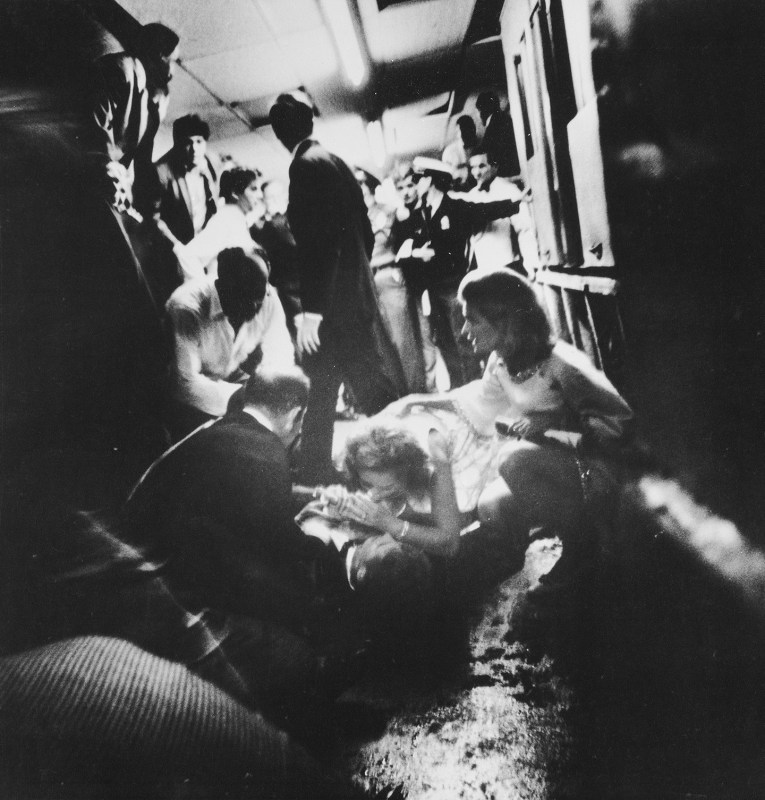
American politician and Presidential candidate Robert Kennedy (1925 – 1968) lies on the floor of the Ambassador Hotel’s kitchen after being shot while his wife, Ethel Kennedy, leans over him and others watch, Los Angeles, California, June 5, 1968. (Bill Eppridge/The LIFE Picture Collection/Getty Images)
The LIFE Picture Collection/Gett
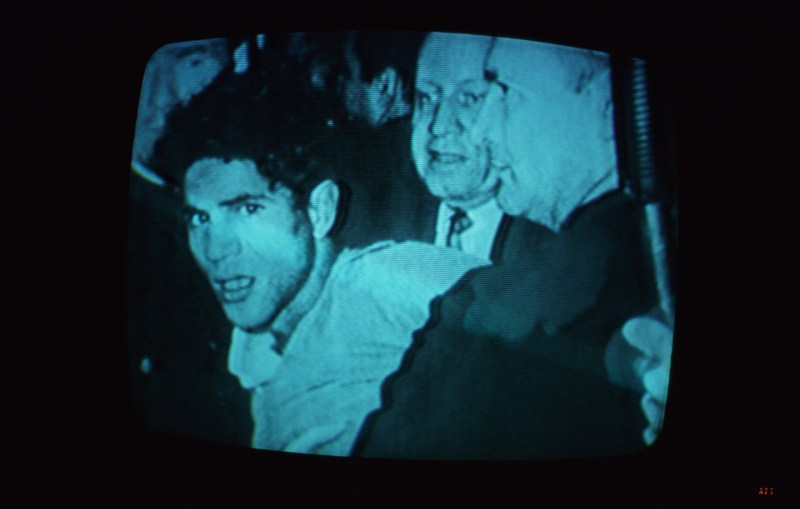
A television picture, broadcast in May 1977, of Palestinian-born assassin Sirhan Sirhan being arrested after his shooting of United States Senator Robert Kennedy (1925- 1968) at the Ambassador Hotel, Los Angeles, California, 5th June 1968. (Ernst Haas/Hulton Archive/Getty Images)
Getty Images
September 30: Boeing introduces the first 747 “Jumbo Jet”
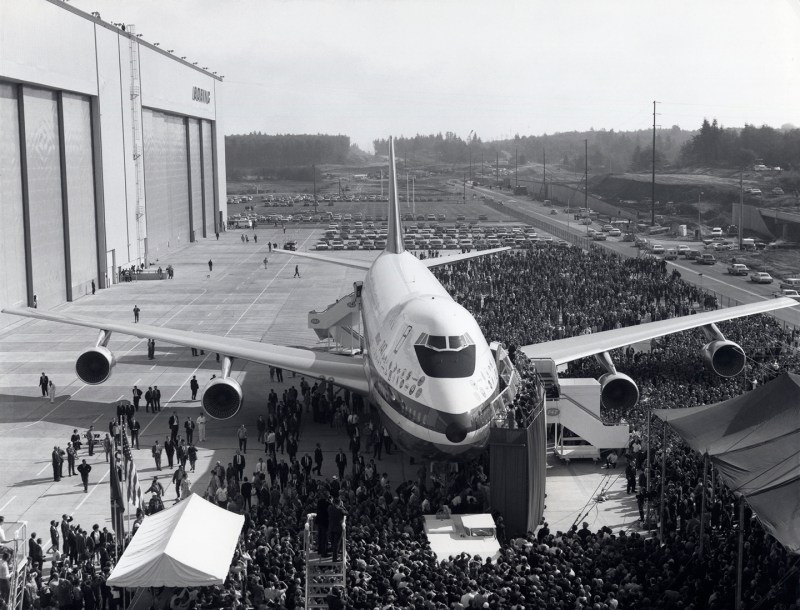
The prototype of the ‘Jumbo’ being rolled out of its purpose-built factory – the largest building ever built – at Everett, Washington, USA. The world’s largest passenger airplane, the Boeing 747 carries up to 400 people. The aircraft first entered service in 1970. (SSPL/Getty Images)
SSPL via Getty Images
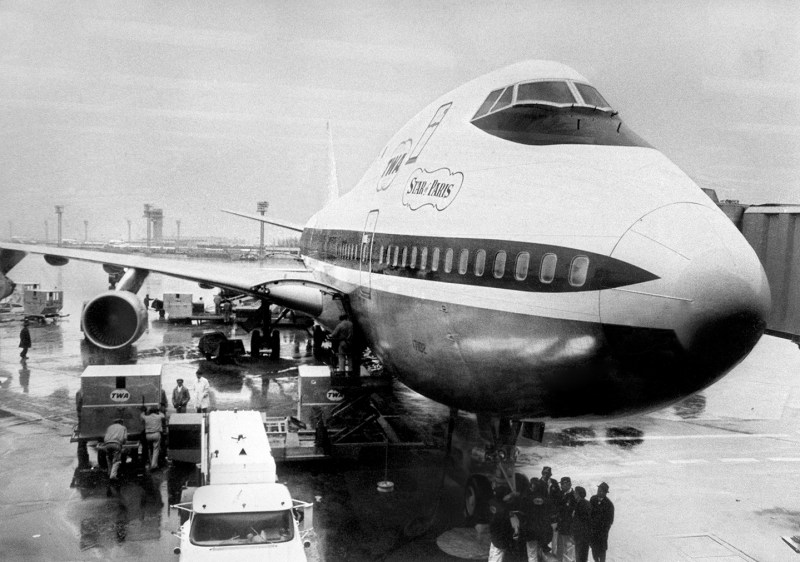
The TWA “Star of Paris” Boeing 747 is seen just after landing at Orly’s airport, on April 13, 1970, after its first New-York-Paris commercial flight. On September 30, 1968, the first 747 was rolled out of the Everett assembly building before the world’s press and representatives of the 26 airlines that had ordered the plane, and first flight took place on February 09, 1969. The Boeing 747, also called the “Jumbo Jet,” entered service on January 21, 1970, on Pan Am’s New York?London route. (AFP/Getty Images)
AFP/Getty Images
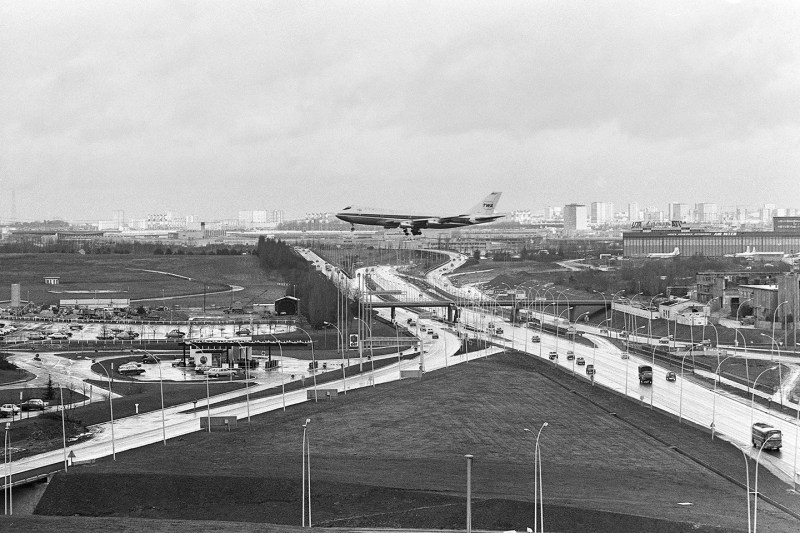
An Air France Boeing 747 is seen just before its landing at Orly’s airport, on February 08, 1970, after a test flight. On September 30, 1968, the first 747 was rolled out of the Everett assembly building before the world’s press and representatives of the 26 airlines that had ordered the plane, and first flight took place on February 09, 1969. The Boeing 747, also called “Jumbo Jet,” entered service on January 21, 1970, on Pan Am’s New York to London route. (AFP/Getty Images)
AFP/Getty Images
October 16: U.S. athletes take a stand at the Summer Olympics
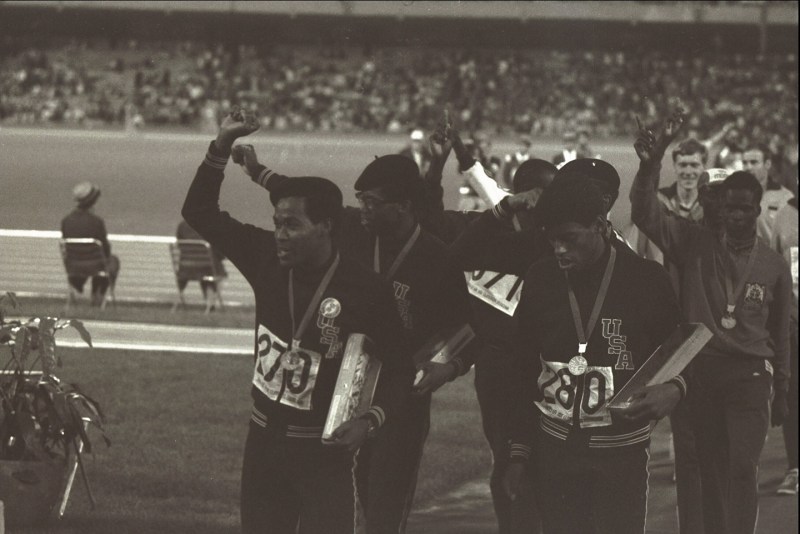
The USA team which won the 4 by 400 meters relay in a world record-breaking performance leave the arena, holding aloft clenched fists, at the 1968 Olympic Games in Mexico City, Mexico. Demonstrations, commercial or political, in the Olympic arena are forbidden under the IOC Charter. At the Mexico Games, this was breached by some black US sprinters who after their victories raised a hand covered by a black glove and wore no shoes at the medal ceremony to symbolize the plight of black Americans, some of whom lived in poverty and were denied some human rights. This was not an instant emotive reaction, for Tommie Smith, the winner of the 200 meters, and John Carlos were members of an American organization called the Olympic Project for Human Rights. The IOC indicated that the athletes should be punished and left that to the US Olympic Committee, who expelled them from the team. But others followed their lead. While a rule was broken, the demonstration itself provided a small contribution to another Olympic principle of fighting against any form of discrimination.
Getty Images
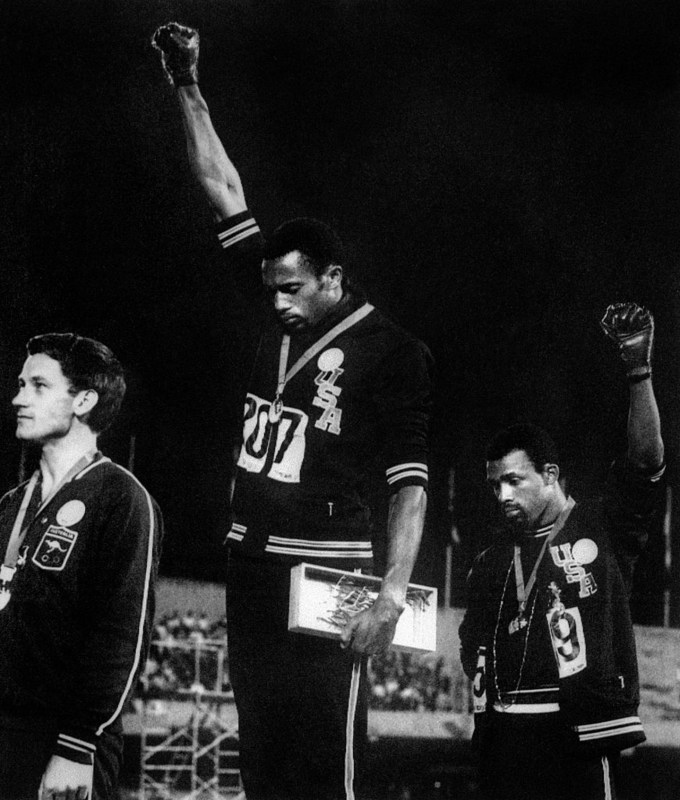
US athletes Tommie Smith (C) and John Carlos (R) raise their gloved fists in the Black Power salute to express their opposition to racism in the USA during the US national anthem, after receiving their medals 17 October 1968 for first and third place in the men’s 200m event at the Mexico Olympic Games. At left is Peter Norman of Australia who took second place. (AFP/Getty Images)
AFP/Getty Images
November 22: “Star Trek” airs American television’s first interracial kiss
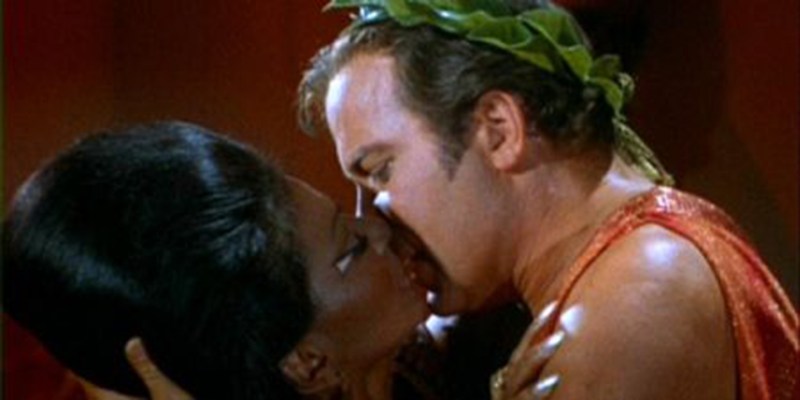
In an episode of TV’s original “Star Trek” entitled “Plato’s Stepchildren,” Enterprise Capt. James Kirk, a white man, played by William Shatner, kisses Nichelle Nichols’ character, Lt. Nyota Uhura, a black woman. (Wikipedia)
December 24: Apollo 8 is the first manned spacecraft to orbit the moon
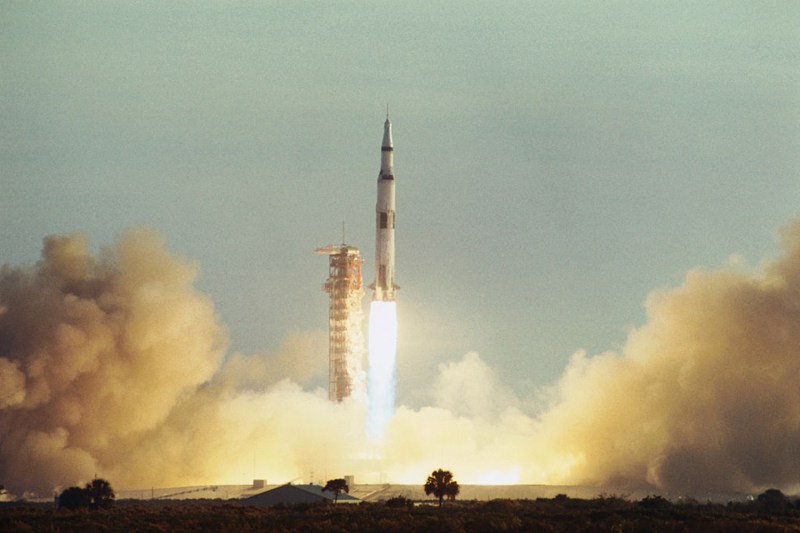
Apollo 8 Blasting Off
Bettmann Archive
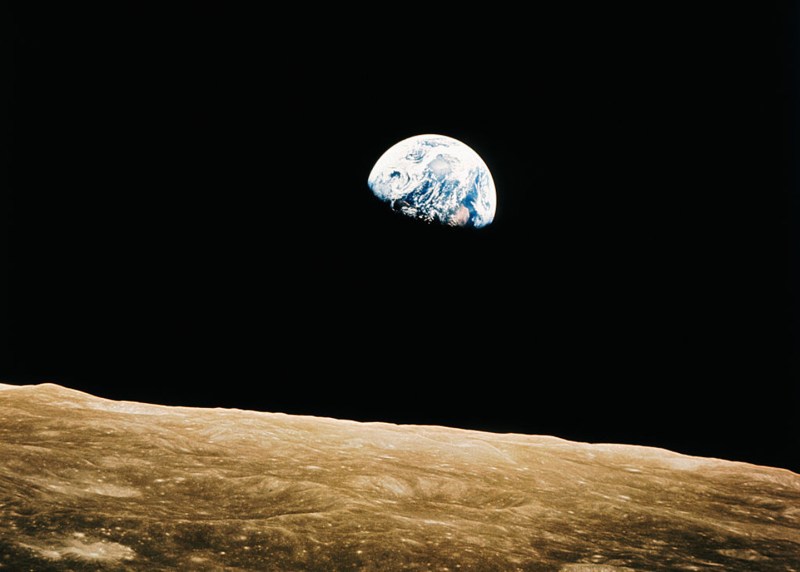
Manned Spacecraft Center, Houston, Texas: Apollo 8 This view of the rising Earth greeted the Apollo 8 astronauts as they came from behind the moon after the lunar orbit insertion burn. Earth is about five degrees above the horizon in this photograph. The unnamed surface features in the foreground are near the eastern limb of the moon as viewed from Earth. The lunar horizon is approximately 780 kilometers from the spacecraft. The width of the photographed area at the horizon is about 175 kilometers. On the earth 240,000 statute miles away, the sunset terminator bisects Africa.
Bettmann Archive
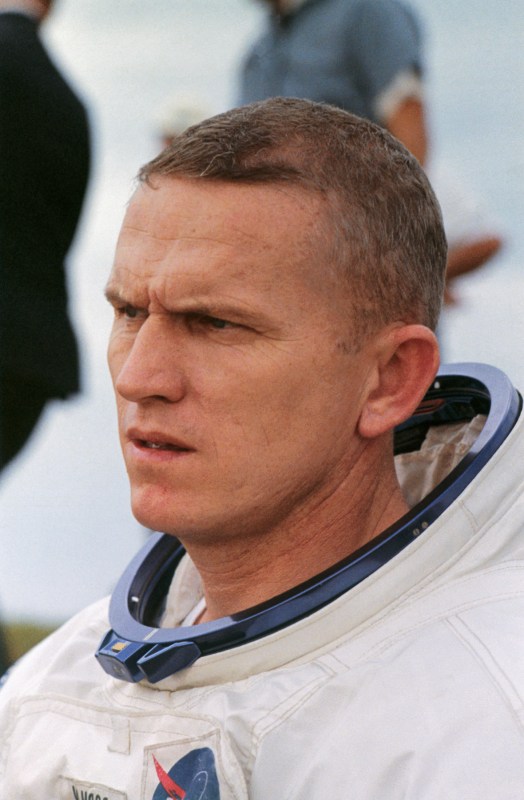
Cape Kennedy. Appollo 8 Astronaut Frank Borman the Apollo 8 mission is set for mid-December. (Bettmann/CORBIS/Bettmann Archive)
Bettmann Archive
This article appeared in an InsideHook newsletter. Sign up for free to get more on travel, wellness, style, drinking, and culture.























